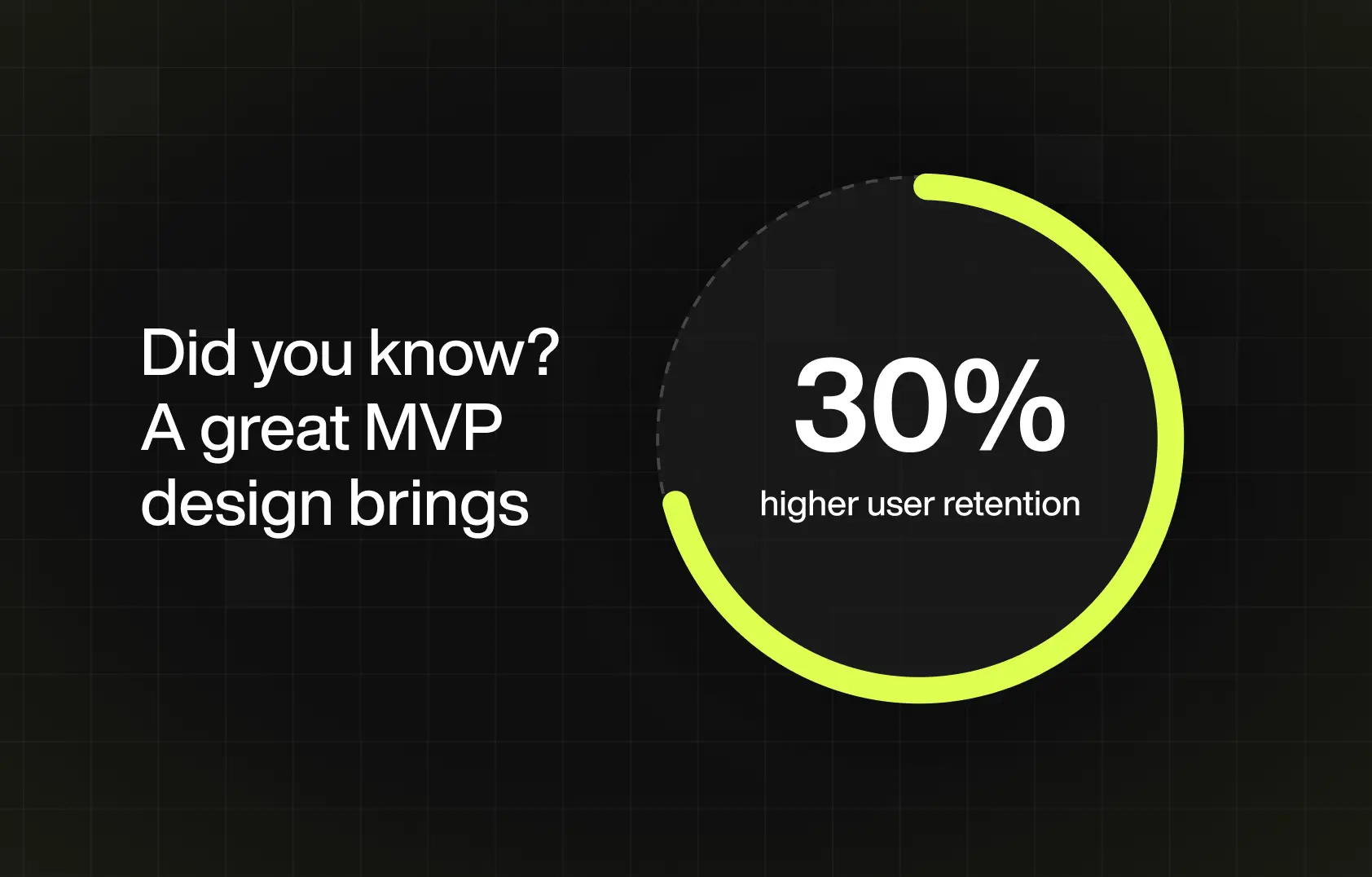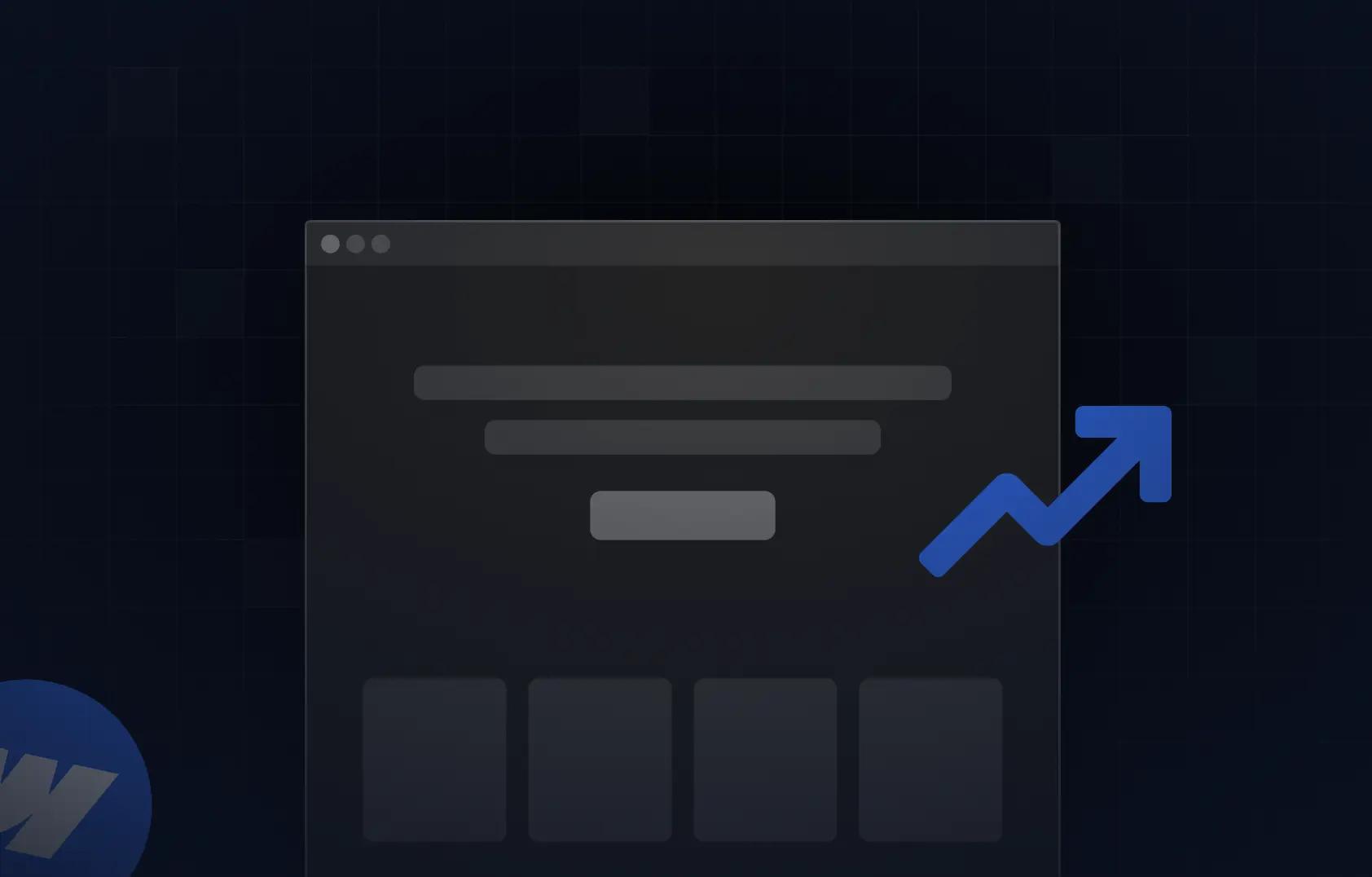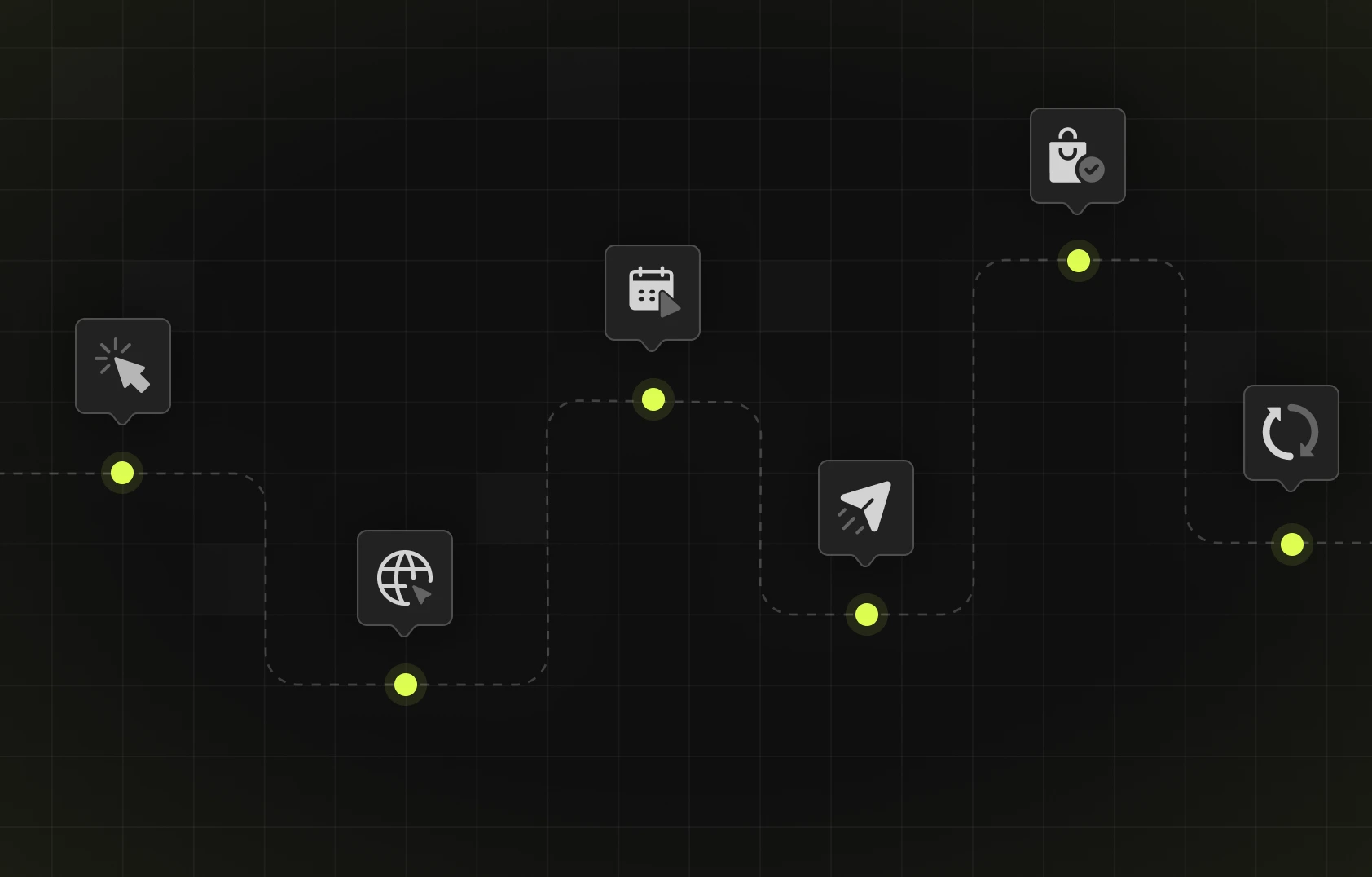Table of content
Summary:
Designing a Minimum Viable Product (MVP) is about focusing on solving a core user problem with a simple, testable product. It helps you validate ideas and learn quickly, without wasting time or resources on unnecessary features.
- An MVP is not a cheap version of a product
- MVP design should start with identifying the core user problem and clear success metrics.
- After identifying the problem, you should work on the shortest user flow from landing to solving the problem before adding features.
- Prioritize features that directly impact users and leave “nice-to-haves” for later.
- Keep the design simple and testable to gather real user feedback early.
- Test the flow with prototypes before building to avoid costly mistakes.
- Avoid common pitfalls like overbuilding, skipping user testing, or polishing too much before launch.
How to design a Minimum Viable Product (MVP)
You might think you need a completely polished and fully loaded product before you can launch your business successfully. However, MVPs are there to prove you otherwise. When done right, they give you the insights you need to refine your vision so the final product lands with real impact. The key, of course, is having a solid MVP design. This guide will walk you through exactly what you need to know before you start mapping out your core user flow.
What is an MVP design and development?
What does an MVP stand for? An MVP or Minimum Viable Product represents the simplest workable version of your product. Simply put, it’s a product containing only its essential features. The goal of creating an MVP is to validate the initial vision, gather insights, and use the gained data to iterate and build quickly. It helps you save time, money, and, frankly, nerves by allowing you to.
- Test your idea with real users,
- Spot website or mobile product design issues early on,
- Reduce the risk of building a full product for which there’s no demand,
- Learn how to create user-centered design solutions,
- Improve the essential features,
Yevgeniy Brikman, the co-founder of Gruntwork, sees the MVP as a product that
“...should deliver value even though it's not as complete as it could be.”
An MVP design and development, therefore, implies building a basic version of a product that is able to fulfill the product’s core purpose, within a limited time and budget.
MVP design isn’t about cutting corners
Some people may think early-stage product design is used to create the cheap versions of a product, something you throw together quickly and hope for the best. But that couldn’t be further from the truth. A well-designed MVP can’t be about slashing quality. It still means crafting a focused product that will help you learn what your users actually want, without wasting time and budget on the things they don’t.
But how to achieve a great design that can help you accomplish it? Find the answers in the following steps.
#1 Know the problem you’re solving (not just the product)
Before you sketch anything, you need clarity on the user problem you want to solve and, naturally, your target audience. So, at the very beginning, you must know what the core pain point is for your users in order to align the MVP to solve just that.
For example, imagine you’ve built a fitness app, but users keep asking for a way to track their workouts offline. This shows a problem - they can’t reliably use the app at the gym when Wi‑Fi is spotty. The possible solution is to add offline tracking that syncs later or let users export workouts as PDFs or screenshots.
At the same time, once you figure out the problem you aim to solve, you need to figure out the objectives upon which you’ll measure success. So, what can be a goal for our example? For instance, you may want 70% of users to complete at least one workout using offline mode in the first month, or collect at least 100 pieces of user feedback on the new offline feature.

#2 Map the core user flow first
When designing an MVP, your priority isn’t adding every possible feature. Your focus should be on mapping the shortest path for users to solve their problem. This is your core user flow - it implies what happens from the moment a user lands until they achieve the outcome they’re looking for. At this stage, there’s no need to get stuck on polished visuals or complex design details.
Take the fitness app example we discussed earlier. If the goal is to help users track workouts offline, your core flow might look like this:
- The user opens the app and selects a workout,
- They see an option to “Download for offline use”,
- They complete their workout at the gym without Wi‑Fi,
- Once connected again, the app syncs the workout automatically.
#3 Choose features that actually matter (and ditch the rest)
Since the MVP has only the basic features, you must work on shortlisting the elements that will be a part of it. These are the essentials that directly support your users’ goals. For the fitness app in question, prioritized features may include downloading workouts for offline use, logging completed workouts without a connection, and syncing data automatically once back online.
Designers can use insights from user surveys, competitor research, or any other findings to guide this process. The goal is to filter out all those features that are only nice to have and keep the elements that will make a real difference for users.
#4 Design for learning, not perfection
When you’re designing an MVP, your goal shouldn’t be to wow people with flawless visuals and numerous features. The ultimate objective is to learn as much as possible about what works and what doesn’t. It means your design should make it easy for users to take action, on the one hand, and for you to gather feedback, on the other. So what does it mean? You should keep your UI simple, make calls-to-action stand out, and ensure users are well aware when something has happened (like a task completed or a form submitted).

#5 Test the flow before you build
Before you jump into development, you need to know if your core user flow actually works. Always keep in mind that building first and testing later can be expensive and inefficient. By testing on time, you can spot friction points and make adjustments while changes are still easy (not to mention cheap) to make.
In the end of the day, it provides you with the confidence that your MVP design is on the right path. Here’s how the testing process should go:
It is also important to recognize that testing is, in fact, an ongoing process. It’s the best and most secure way to improve your product and boost your user experience, all while maintaining a competitive edge.
Common MVP design mistakes to avoid
Although it may seem that the MVP concept (and execution) are pretty straightforward, many things can go wrong along the way - and affect the success of your MVP launch. So, without further ado, let’s take a look at mistakes you most certainly want to avoid when bundling an early-stage product:
- Trying to do too much instead of solving a focused, specific problem,
- Launching without involving real users,
- Delaying launch to polish every feature,
- Building without confirming there's a real need,
- Lacking a clear success metric,
- Building without considering trends and competitors,
- Prioritizing quantity over usefulness and user experience.
- Discarding unsuccessful MVPs without analyzing what went wrong.
Real MVP design example (that aren’t just apps)
Did you know that some of the most successful companies started with extremely simple MVPs? Below are some of the well-known real-world MVP types that will easily prove our point:
- Landing page + waitlist
Buffer started as a single landing page explaining the product and offering a sign‑up form. When users joined the waitlist, they were shown pricing plans to gauge their willingness to pay. All that was done before the product was even built.
- Clickable prototype
Airbnb’s founders started with a very basic website showing photos of their own apartment. Guests could book air mattresses on their floor for a small fee. This simple prototype proved there was demand for short‑term rentals.
- Concierge MVP
Groupon began as a WordPress blog where the founders manually wrote and emailed daily deals. When users signed up, they tracked responses by hand and sent PDFs to participating businesses. Only once the model worked did they automate the platform.
So, what does an MVP mean in UX design? As you can see, a well-thought-out MVP is about finding the smartest way to test your idea. It has nothing to do with cutting corners or rushing an unfinished product.
Wrapping up - MVP design is about focus, not flaws
Can users quickly understand what your product does and how it helps them? It’s the most important question to answer when preparing to launch an MVP. With this basic version of your product, clarity always beats perfection.
That, however, does not mean you should put no effort into the design. A confusing experience will only lead to users abandoning your product because they couldn’t figure it out, not because the idea lacked potential. If you need help sketching out this version of your product and designing something that gets users from problem to solution as directly as possible, our MVP design experts are here to help. Simply reach out to us, and we’ll begin the process of setting you up for long-term success.
FAQ
What is an MVP in game design?
In game design, MPV is a playable version of a game that focuses only on the core mechanics and essential features. The goal stays the same as with all the rest of the MVP types - test the idea with players early, gather feedback, and make improvements before investing in a full release.
What is MVP software design?
MVP software design refers to creating the basic version of a software product that solves the main user problem. It can be a part of SaaS product design or used for early-stage development of website platforms and mobile apps.
Why is MVP design important for startups?
MVP design helps startups save time and resources by focusing on what matters most to users. It allows them to launch faster and test the market rather than spending months building features people might not want.
What is the difference between an MVP and a prototype?
A prototype is a draft of your product used to explore ideas and test design concepts. MVP, on the other hand, is a working version with essential functionality.
Can you launch an MVP without coding?
Yes! With the Webflow design and development method, for example, you can create the MVP without using code. These types of tools let you build a functional early-stage product without full development. It’s a good way to test your ideas faster and with less money.





%201.svg)






